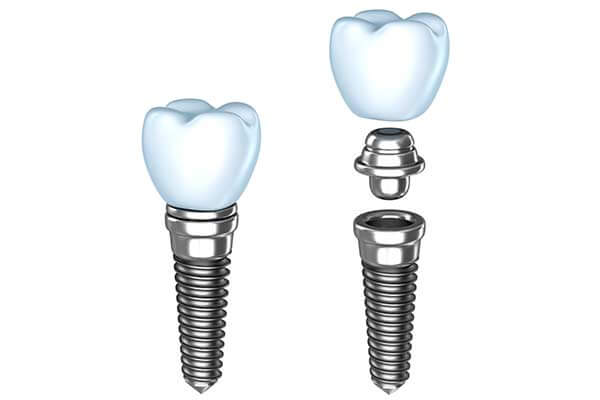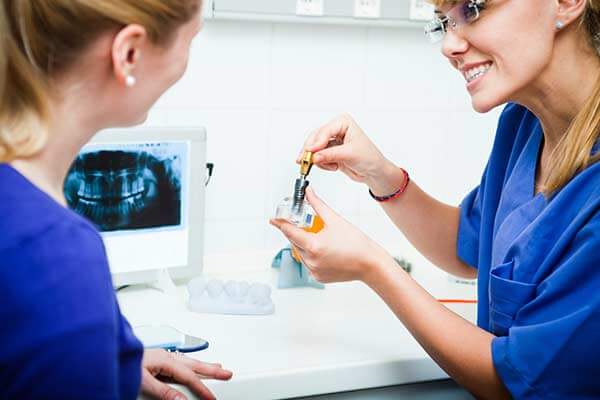Dental Implants
We specialize in implant placement. According to the American Academy of Oral and Maxillofacial Surgeons (AAOMS), dental implants have a success rate of 95% when placed by a dental specialist.
Although having a beautiful smile and the confidence that comes with that are important, there are also important health reasons to have dental implants. Whether replacing one tooth or several, implants are an important solution to restoring and maintaining dental health.
Once a tooth is lost, several things begin to happen that are not immediately noticeable to a patient and which can have a significant negative effect on both health and appearance. Tooth roots help hold teeth in place but they are also critical in maintaining health in the surrounding gums and supporting bone structures. Bone loss in the jawbone is one of the significant problems that naturally occurs once a tooth is lost. This bone loss can compromise the integrity of neighboring tooth roots and tooth stability. This bone loss is also a large part of what causes the “sunken” look that is seen in people who have lost several or all of their teeth. It is the reason patients who wear dentures find that over time their dentures are harder and harder to fit and keep in place.
Dental implants help maintain and strengthen bone structure. This means they do much more than replace the missing tooth – they also protect the existing teeth by helping to preserve bone structure.

Dental implants are the replacement of tooth roots in the mouth. Implants provide a strong foundation for fixed or removable replacement teeth. Dental implants, which are placed in the jawbone, are small anchors made of a biocompatible metal called titanium. The anchors begin to fuse with the bone over the course of a few months. After the fusing process, known as osseointegration, abutment posts are inserted into the anchors to allow for the permanent attachment of the replacement teeth.

Dental implants are the replacement of tooth roots in the mouth. Implants provide a strong foundation for fixed or removable replacement teeth. Dental implants, which are placed in the jawbone, are small anchors made of a biocompatible metal called titanium. The anchors begin to fuse with the bone over the course of a few months. After the fusing process, known as osseointegration, abutment posts are inserted into the anchors to allow for the permanent attachment of the replacement teeth.
Using CBCT scans and restorative virtual treatment planning, along with specialized training, we are able to provide guided implant placement for our patients.
Using a virtual 3-D model or a physical model, implant placements and the following restorative work can be simulated to create the ideal patient treatment plan. These virtual plans allow the doctor to take multiple aspects of implant placement and restoration into consideration, resulting in optimal aesthetics, function and longevity for the patient’s final restoration. Working with a 3-D model also allows the patient to better understand the procedures and visualize the end result.
Once planning is complete, specialized software can be used to create a surgical guide for use during implant placement. This guide directs the exact location, angle and depth of the implant placement. The use of the guide increases the accuracy, efficiency, safety and predictability of the procedure.
